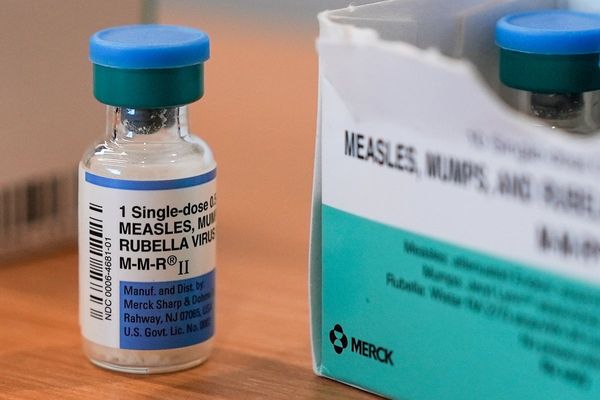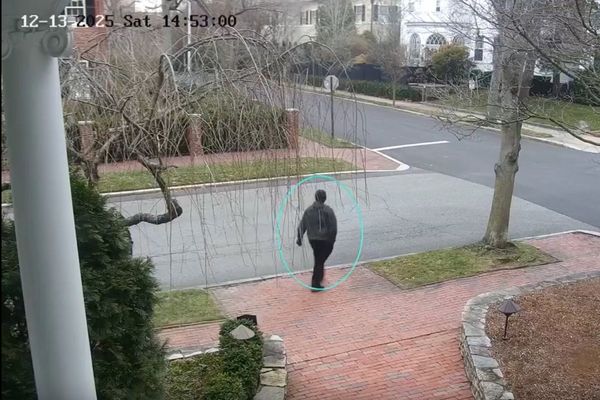

Scroll on TikTok these days and you’re bound to encounter scores of users sharing their experiences with ChatGPT. But beyond its more common uses — from retrieving recipes to editing emails or crafting breakup texts (yes, really) — more and more young Aussies are turning to AI chatbots for something far more personal: their mental health.
On the surface, it feels like something ripped out of Black Mirror, and while there have been dystopian examples of how chatbots can negatively impact users’ mental health, the reality of ChatGPT’s use as a therapeutic tool is as complex as the very algorithms that power it.
And like most Black Mirror endings, the resolution isn’t purely good or bad, but somewhere much murkier in the middle.
Earlier this month, Aussie influencer Skye Wheatley opened up about using ChatGPT for therapy to manage her ADHD, and she’s far from the only one who has made a therapist out of a chatbot. So, as Aussies face a mental health crisis in tandem with AI’s unstoppable advancement, we thought it was as good a time as any to get the low-down:
Is ChatGPT on the cusp of revolutionising mental health care?
Or are we simply shouting our anxieties into the void?
Zero dollars, no waitlists

According to some experts we chatted to, there are practical benefits of using ChatGPT as a therapist, mostly in its low cost and ability to bypass the red tape around consulting an actual therapist.
“Psychological therapy can be expensive,” Dr. James Collett, a psychologist and senior lecturer in psychology at RMIT, told PEDESTRIAN.TV.
“Cost can be a barrier to seeking support, especially with current cost of living pressures. Societal demand for mental health support also means that many psychologist practices have a client waitlist.”
Jessica Herrington, a neuroscientist at the Australian National University whose work uses cybernetics to explore AI and human perception, also acknowledged this barrier.
“While traditional therapy can take weeks or months to get an appointment… there is no wait time to access ChatGPT,” she said.
So as grocery prices soar to mortgage levels, it’s understandable why folks might look to overcome the cost barrier altogether by trauma-dumping on a chatbot that’s available around the clock, often completely free of cost.
Calm *those* IRL jitters.

Beyond practicality, both Both Collett and Herrington agree AI models can be a positive first step to seeing an actual psychologist.
“Seeing a psychologist can be confronting at first, as it involves trusting another person with personal experiences that have often been painful and challenging,” Collett said. “Using ChatGPT can provide a means for people to explore what psychological therapy might look like, without facing that interpersonal challenge that talking to a psychologist represents.”
Herrington echoed how people might “prefer to explore issues on their own before sharing with others”, with ChatGPT providing a level of anonymity that might allow users to speak more candidly without fear of judgement from an IRL therapist.
It’s why I’ve divulged things to my own chatbot that not even my mum knows (hackers; that was not an invitation), and it’s why Herrington and Collett acknowledge that, when used with a healthy dose of common sense, ChatGPT can be a useful therapy tool… within reason.
AI wishes it was an actual therapist

It might go without saying, but any therapeutic advice from ChatGPT should be taken with a grain (or truckload) of salt — like, seriously, enough to cause high blood pressure — not least because chatbots simply weren’t built for these purposes.
“ChatGPT has not been designed with psychological therapy in mind, and therefore is not appropriate for therapeutic use,” Collett said.
Since it works by “trawling the internet … and delivering information in a conversational manner”, as Collett explained, ChatGPT provides therapeutic guidance that “is not unique, as it has been identified and copied from other sources”.
News flash: AI is not human

That one-size-fits-all approach, weaved into the very fabric of how ChatGPT functions, is a reminder that (*dons* Captain Obvious hat) ChatGPT is not human, and cannot glean from real-world human contexts like that of a therapist’s office.
It is therefore completely devoid of the human aspect that Herrington said is so critical to real-life therapy.
“Models such as ChatGPT are limited because they don’t have a lot of context to work with. They cannot perceive the way you might be speaking, your posture, or your body language. ChatGPT cannot understand what your social networks might be like or what other external support you may (or may not) have access to,” she said.
Try as it might, AI cannot understand the human, lived reality of whatever it is users might be seeking advice for. “ChatGPT does not know ‘what it is like’ to live as a human being in the world,” Herrington said.
“It doesn’t know what it’s like to lose a loved one, watch a parent age and go into care, or struggle with adolescence. A human therapist is better able to empathise with you and socially connect with you.”
Collett agreed, saying that while an actual psychologist will take the “most appropriate therapeutic approach to take based on your personal context”, chatbots are “simply not able to consider individual differences, non-verbal expressions of emotion, and readiness for change in the way that a trained psychologist can”.
ChatGPT, the yes man

Unlike an actual human, ChatGPT tends to agree with everything you say, and while this might align with those of us who are simply never wrong (me), this baked-in confirmation bias can have harmful and potentially dangerous effects, particularly within the space of mental health.
“ChatGPT tends to shape its responses towards what an individual wants to hear, which might be quite different from what it would be legitimately helpful to hear,” Collett said.
As a digital yes-man, chatbots can actually validate users’ doubts, angers, impulses, and — in some extreme reported cases — even prompt their psychoses. “It’s easy to imagine the extreme harm potentially arising from interactions with ChatGPT,” Collett said.
So where does that leave your chatbot therapist?
Taking all of this into account, Herrington concluded that while ChatGPT has a place within the mental health ecosystem, it should not supersede the work of an actual therapist.
“There are key benefits like access and cost which means more people get some form of therapy sooner rather than later,” Herrington said. “[But] ChatGPT is an intriguing additive tool, rather than a replacement for real therapy.”
Looking even further into the future, Collett said he sees AI being used as a supplement “both within and outside of the therapy room”, including as a tool to assist processes like assessment screening, reflective exercises, and monitoring thought and mood.

“We will soon see psychologists recommending appropriate AI tools to their clients to assist them before, during, and after therapy,” he said.
Collett even predicted a world where therapy-specific chatbots with evidence-based algorithms will be created, leading to “AI therapy assistants emerging”.
But in the meantime, we’ve only got ChatGPT, and “the deeply personal nature of psychological work means that it will not be enough to replace therapy”, Collett said.
The bottom line? Don’t lose your actual therapist’s number
So, while there are benefits in ChatGPT’s inexpensiveness, accessibility, and anonymity, using it as a therapist comes with some very clear caveats. Be mindful of these whenever consulting the algorithm Gods about your fresh anxiety of the week, and if all else fails, here’s some parting wisdom from Collett.
“The main message that I want to convey is that at present, if people are experiencing any psychological distress or are otherwise concerned about their mental health, then please seek out support from a psychologist.”
Lead images: Paramount Pictures and WikiCommons
The post Gen Z Are Increasingly Using ChatGPT For Therapy. What Do The Experts Think? appeared first on PEDESTRIAN.TV .







